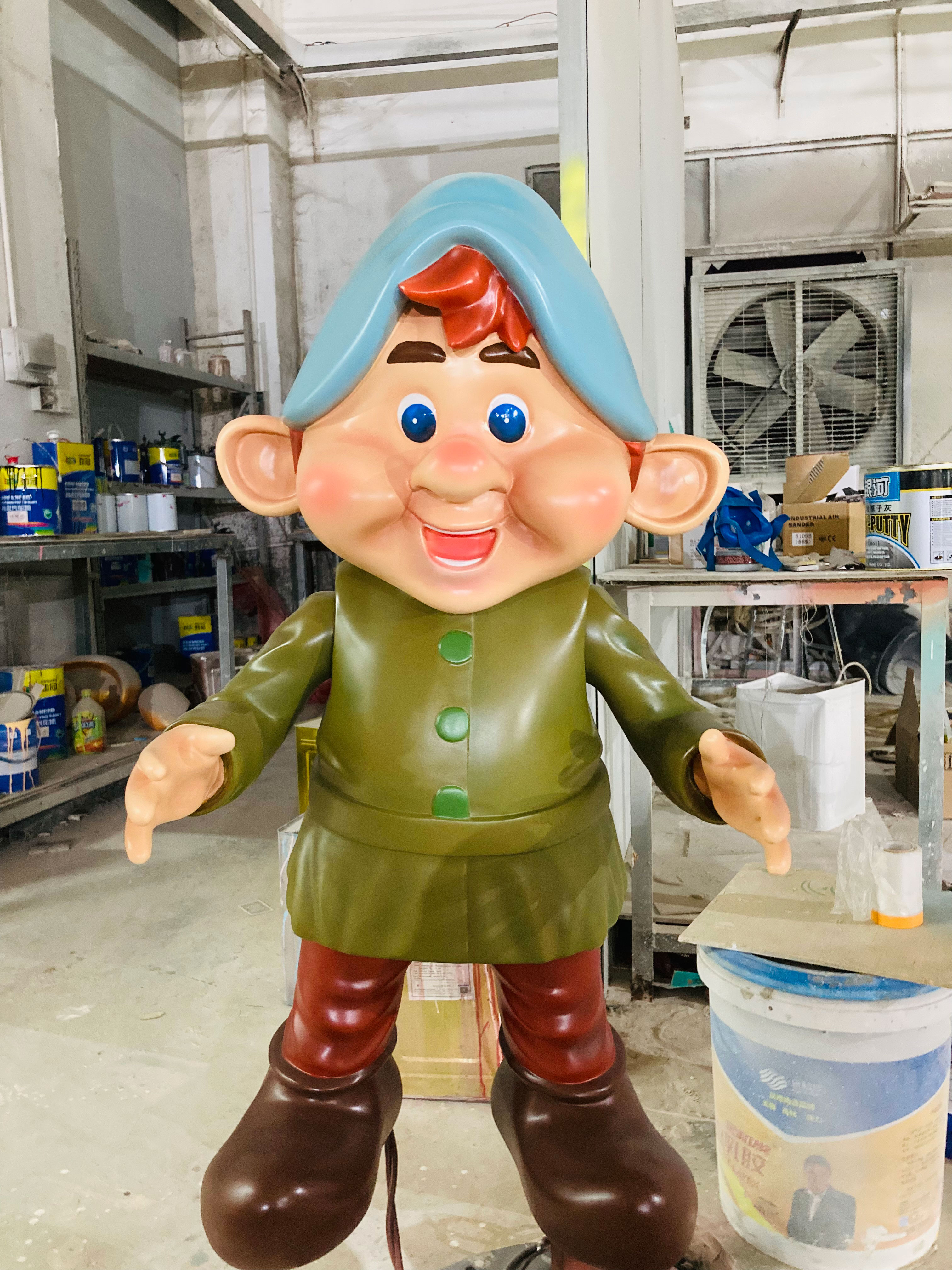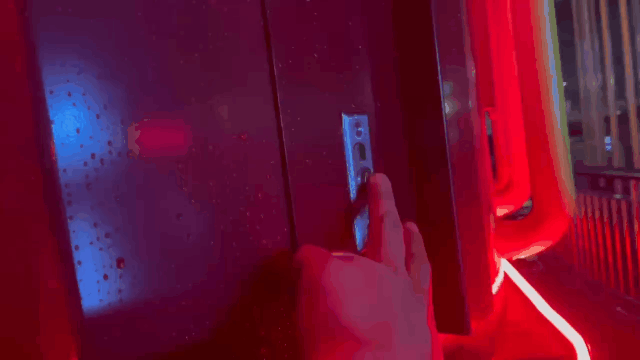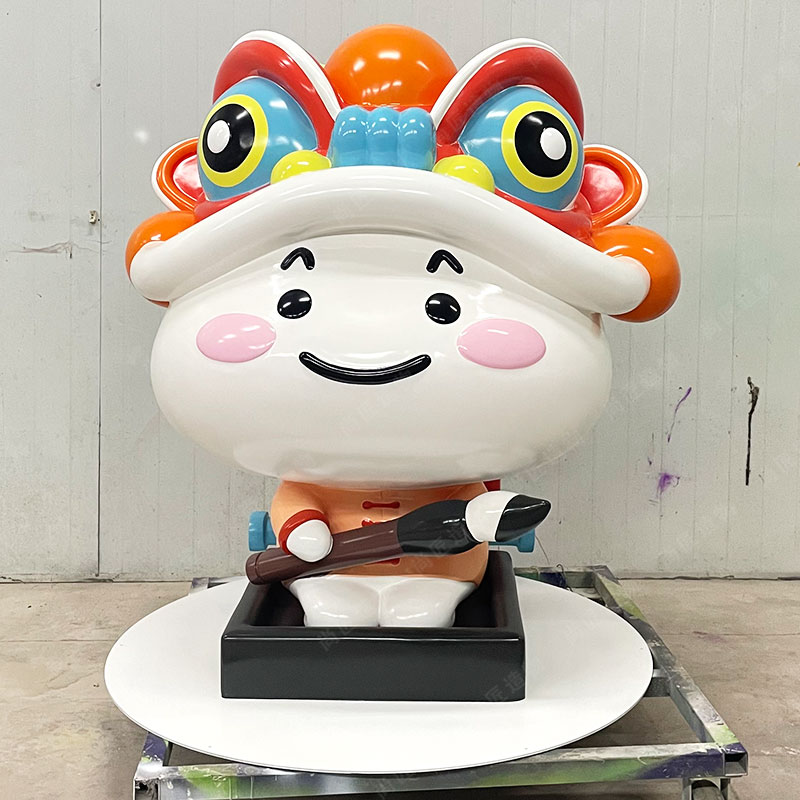Key Takeaways
This guide outlines the essential steps and considerations for legally incorporating recognizable characters into kinetic sculptures. Artists and manufacturers must navigate complex copyright laws specific to both sculptures and character rights. Securing the necessary licenses directly from rights holders or authorized agents is the foundational legal step. Understanding the scope of licensing agreements, including permitted uses and duration, is critical. The process often requires obtaining approval from the original artist or creator's estate. Manufacturers must ensure their production agreements explicitly cover the licensed character rights. Crucially, failing to obtain proper authorization exposes creators to significant copyright infringement risks. The subsequent sections detail the practical legal steps involved and explore the key factors influencing licensing costs for character rights in kinetic art.

Copyright Laws for Sculptures
Understanding fundamental copyright law is essential before creating kinetic sculptures featuring recognizable characters. In the United States and most jurisdictions, copyright protection automatically applies to original works of authorship fixed in a tangible medium, including sculptures, the moment they are created. This protection grants the creator exclusive rights to reproduce, distribute, display, and create derivative works based on the original sculpture. For artists and manufacturers working with established characters, it's crucial to recognize that these characters are almost always pre-existing copyrighted works owned by someone else, often a corporation or individual creator. Creating a sculpture depicting such a character constitutes creating a derivative work. Copyright law strictly reserves the right to create derivatives to the original copyright owner or their authorized licensees. While the "fair use" doctrine provides limited exceptions for purposes like criticism or parody, it rarely applies to the commercial reproduction and sale of character-based sculptures like kinetic art. Consequently, directly sculpting a protected character without permission typically infringes on the owner's exclusive derivative rights. This foundational understanding of copyright scope directly leads into the necessity of legally securing character rights through proper channels before production begins. For example, creating a kinetic Cartoon sculpture requires explicit permission. Protection generally lasts for the creator's life plus 70 years, making most contemporary characters firmly protected intellectual property.
Securing Character Rights Legally
Obtaining legal permission to depict recognizable characters in kinetic sculptures is fundamental to avoiding infringement claims. The process begins by definitively establishing who holds the copyright for the desired character. This typically involves researching with the original creator, publisher, or the current rights holder, often a large entertainment corporation. Simply creating a moving sculpture of a popular character, even if original in design or movement, does not circumvent existing copyright protections.
Once the rights holder is identified, securing formal written permission is mandatory. This usually takes the form of a licensing agreement, a legally binding contract granting specific rights to reproduce the character in your sculpture, under defined conditions. Never proceed based on verbal assurances alone. Key aspects covered in these agreements include the scope of use (https://en.artmovr.com/) is common, but the material choice itself doesn't negate the need for proper character rights clearance.
| Key Licensing Agreement Components |
|---|
| Scope of Use (Number of sculptures, territories) |
| Duration (Length of time license is valid) |
| Quality Control (Standards the sculpture must meet) |
| Royalties (Payment structure, percentage of sales) |
Securing these rights legally protects both the artist or manufacturer and respects the intellectual property of the original creator. It forms the essential legal foundation before moving into detailed contract negotiations or seeking specific artist approvals.

Licensing Agreements Explained
Licensing agreements serve as the formal framework for legally using copyrighted characters in kinetic sculptures. These contracts outline specific terms between the rights holder (https://en.artmovr.com/)—to maintain character integrity. Payment terms typically involve upfront fees plus ongoing royalties based on sales. Legal review is crucial before signing, as vague language regarding derivative works or merchandising rights can lead to disputes. This documented understanding bridges initial rights acquisition and the subsequent artist approval process.

Artist Approval Process Guide
Securing formal artist approval is a critical step after establishing initial licensing terms. This process typically involves direct communication with the rights holder, their estate, or a designated licensing agent. Artists or their representatives require comprehensive documentation to evaluate the proposed kinetic sculpture. Prepare detailed concept art, technical specifications outlining the movement mechanics, and precise material descriptions. Including examples of existing Realistic sculpture work can help demonstrate technical capability and artistic approach.
Submit this package formally according to the rights holder's specified procedures, often managed by their legal or licensing department. The review focuses on artistic integrity, ensuring the moving statue faithfully represents the character and aligns with the creator's established style and public image. Be prepared for potential requests for modifications to the design or motion elements. Negotiations may occur before final written approval is granted. Obtaining this documented sign-off is mandatory before manufacturing can legally commence, protecting both the artist's legacy and the licensee from infringement claims. This approval directly informs the subsequent manufacturer licensing requirements.
Manufacturer Licensing Essentials
For manufacturers producing kinetic sculptures featuring copyrighted characters, securing proper licenses is non-negotiable. Begin by identifying the exact rights holder—often the character creator, publishing house, or media conglomerate. Negotiate a manufacturing license specifying production volumes, distribution territories, and quality control requirements. Crucially, include provisions for mechanical functionality since standard image licenses rarely cover moving components. Always verify royalty structures: most agreements require per-unit payments or flat fees based on production runs. Manufacturers should retain legal counsel to review territory restrictions and audit clauses before signing. Maintaining meticulous production records ensures compliance during rights holder inspections. Remember that licensing authentic IP character sculpture protects against infringement lawsuits while building consumer trust in authorized collectibles. These foundational steps directly support the subsequent focus on infringement avoidance.

Avoiding Copyright Infringement
Securing proper licenses is the fundamental step for artists and manufacturers to avoid copyright infringement when creating kinetic sculptures based on recognizable characters. Using unlicensed characters, even in a moving statue form, constitutes copyright infringement and exposes creators to significant legal risks, including lawsuits, financial damages, and the destruction of unauthorized works. Copyright law protects the unique expression of characters, granting exclusive rights to the copyright holder for reproduction and derivative works. Therefore, creating a kinetic sculpture depicting Spider-Man, Mickey Mouse, or any other protected character without explicit permission from the rights holder is illegal. The only reliable way to avoid infringement is to proactively obtain a license before production begins. This involves negotiating directly with the rights holder or their authorized licensing agent, ensuring all aspects of the sculpture's design and mechanics are covered by the agreement. Relying on assumptions, such as believing a minor alteration makes the character "original," or neglecting to secure rights because the sculpture moves, offers no legal protection. Thorough due diligence and formal licensing are non-negotiable prerequisites for legally producing and distributing authorized character-based kinetic sculpture.

Kinetic Sculptures Legal Steps
Once you've identified the character and confirmed its copyright holder through preliminary research, formalizing the license involves specific legal procedures. Begin by submitting a detailed proposal to the rights owner, clearly outlining your intended use of the character in the kinetic sculpture, including its movement mechanics. Negotiate and finalize a written licensing agreement that explicitly grants permission for this specific application. Crucially, ensure the contract addresses unique aspects of kinetic art:
"Licensing contracts for kinetic sculptures must precisely define the scope of permitted motion and mechanical interaction, as these elements directly impact the character's portrayal and perceived brand value." — Art Law Specialist, Helena Vance.
This phase requires careful review of terms covering territory, duration, exclusivity, royalties, and quality control standards. Include provisions for prototype approvals, where the rights holder must formally sign off on a working model before full production begins. Secure all necessary signatures on the final agreement and retain executed copies. Proper documentation at this stage prevents disputes during manufacturing and distribution. Next, you'll need to understand how these legal steps influence the associated licensing costs.
Character Licensing Cost Factors
The cost of legally licensing a character for use in kinetic sculptures varies significantly and depends on several critical factors. First, the inherent popularity and commercial value of the character itself is a primary driver; iconic characters from major franchises typically command much higher fees than lesser-known figures. Second, the scope of the license plays a substantial role. Costs are heavily influenced by the duration of the license (short-term vs. perpetual), the specific rights granted (exclusivity vs. non-exclusivity), the geographic territory covered, and the projected scale of production. Royalty rates, often calculated as a percentage of wholesale or retail sales, are common, alongside potential upfront minimum guarantee payments. Legal fees for negotiating and drafting the licensing agreement are also a necessary budget consideration. Understanding these variables is essential for accurate financial planning before committing to a project.
Conclusion
Securing proper licensing for character-based kinetic sculptures remains essential for legal compliance and creative freedom. By thoroughly researching copyright laws, pursuing formal character rights agreements, and obtaining all necessary approvals from rights holders, artists and manufacturers can confidently develop authorized moving statues. This process protects against costly infringement claims while respecting intellectual property. Though navigating licensing costs and contract terms requires diligence, the result enables innovative kinetic art without legal uncertainty. Ultimately, following the structured steps outlined—from initial rights clearance to final manufacturer agreements—provides the secure foundation needed for bringing dynamic character sculptures to life responsibly.
Frequently Asked Questions
Do all kinetic sculptures featuring characters require licensing?
Yes, if the character is copyrighted or trademarked. Using recognizable characters without permission constitutes infringement, even in moving sculpture form.
How do I identify the correct rights holder for licensing?
Start by researching copyright registrations or trademark databases. For commercial characters, contact the intellectual property division of the company that created or currently owns the character.
What key clauses should a licensing agreement include for kinetic sculptures?
Essential terms cover permitted territories, duration of use, royalty payment structure, quality control standards for the sculptures, and explicit approval processes for final designs.
Is artist approval separate from corporate licensing?
Often, yes. While the corporation holds legal rights, original artists or estates may retain moral rights or require separate consultation. Your licensing agreement should clarify this obligation.
Are manufacturing costs different for licensed kinetic sculptures?
Licensing adds expenses like upfront fees, royalties per unit sold, and potentially higher production costs to meet rights holders' quality specifications. Budget accordingly.
 ch
ch English
English






